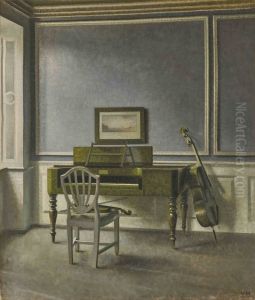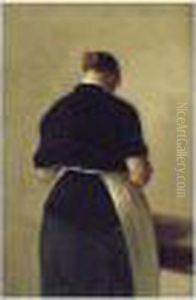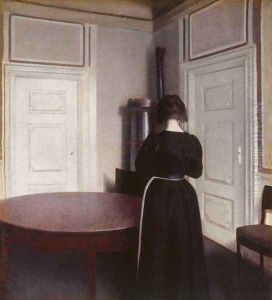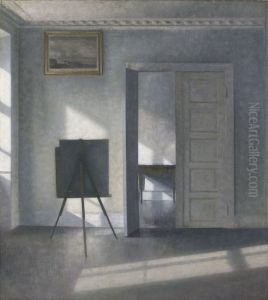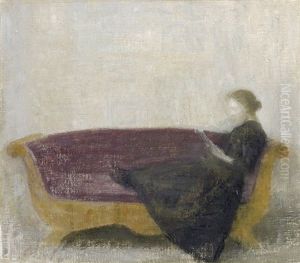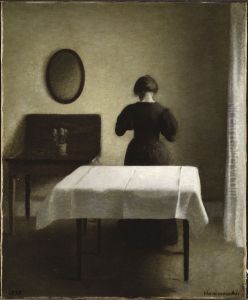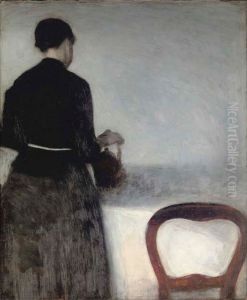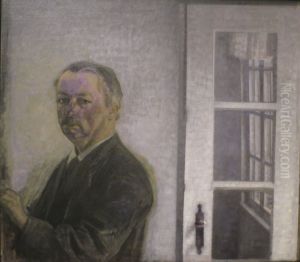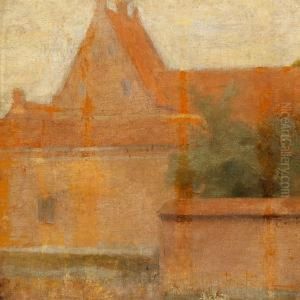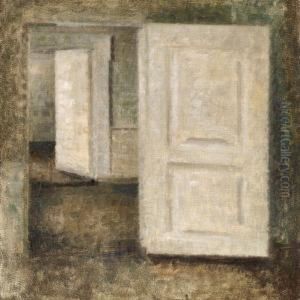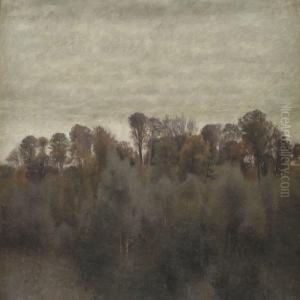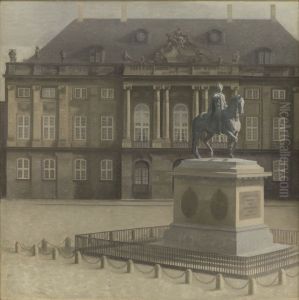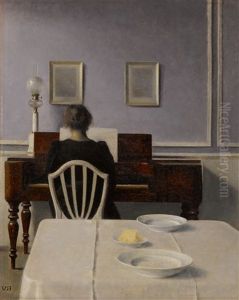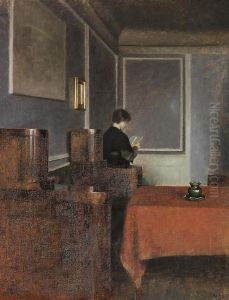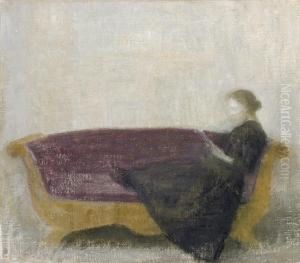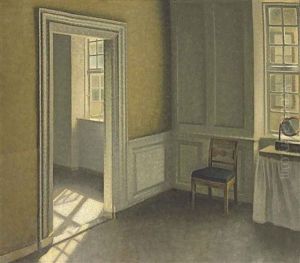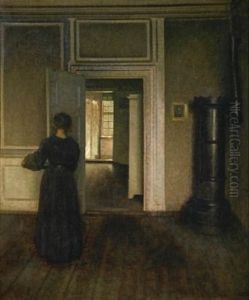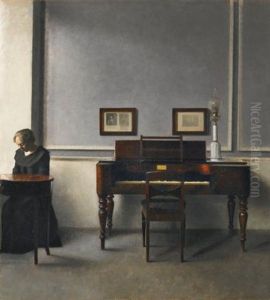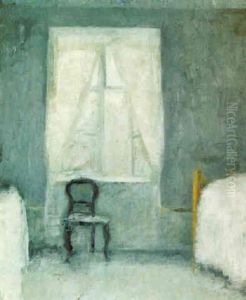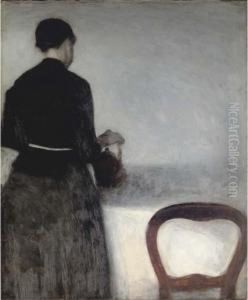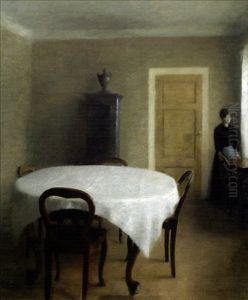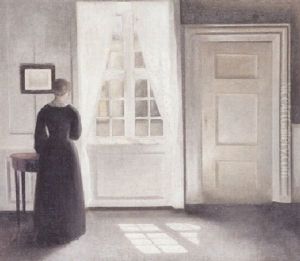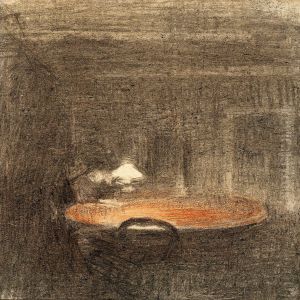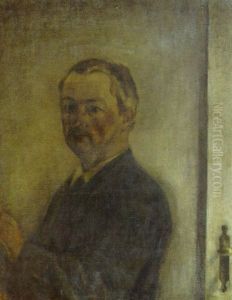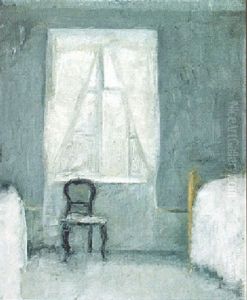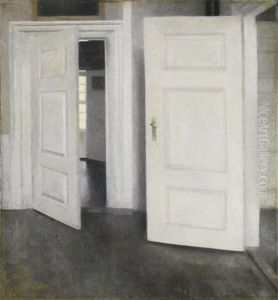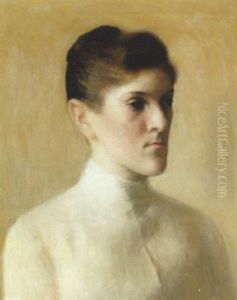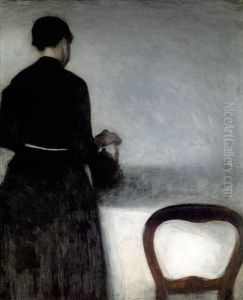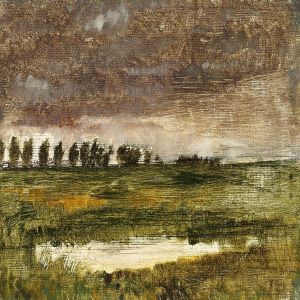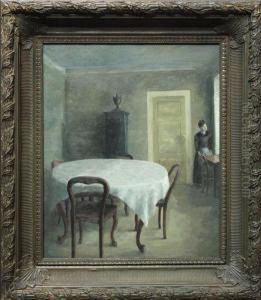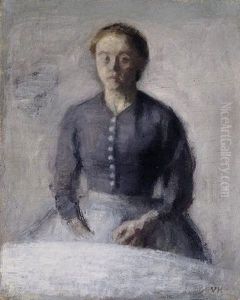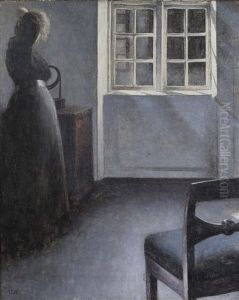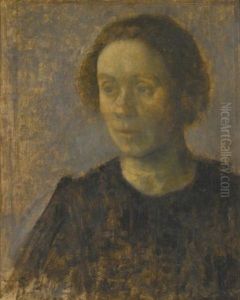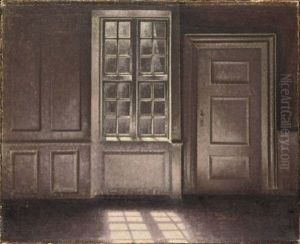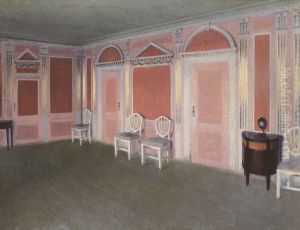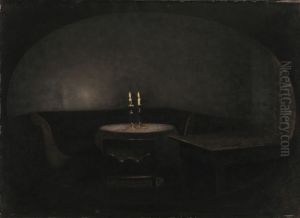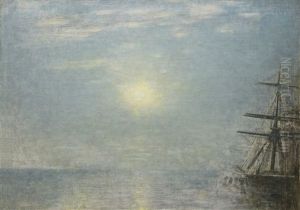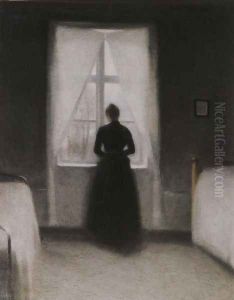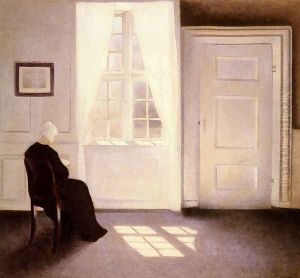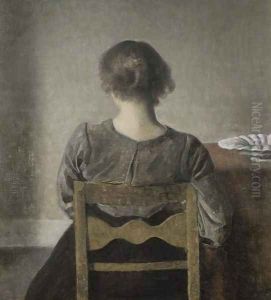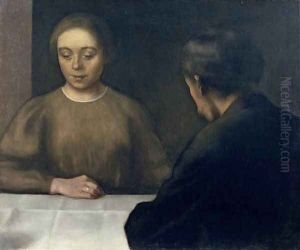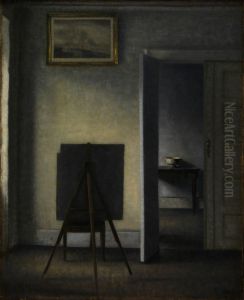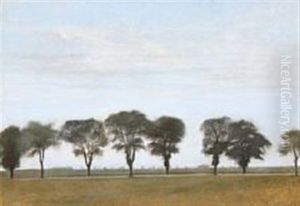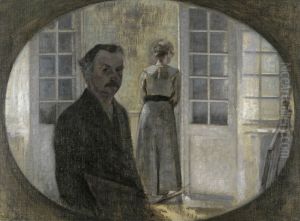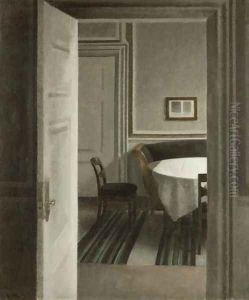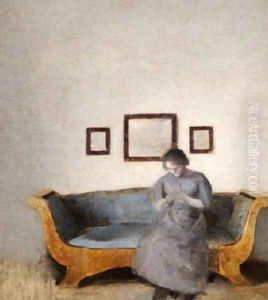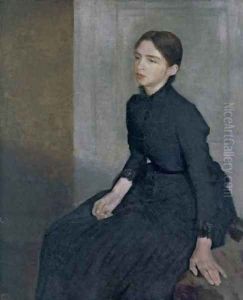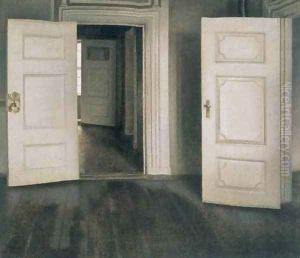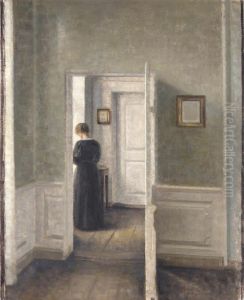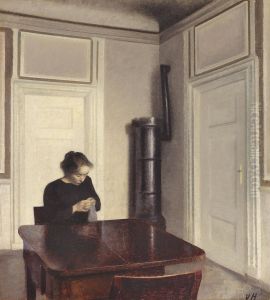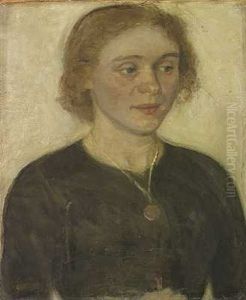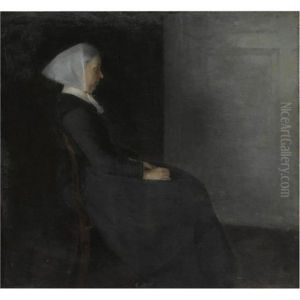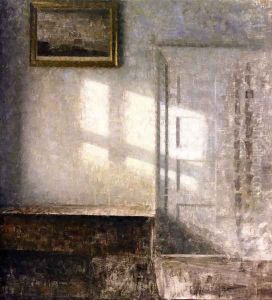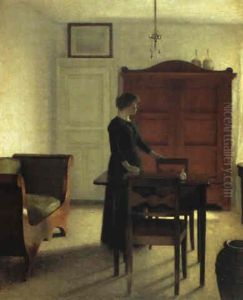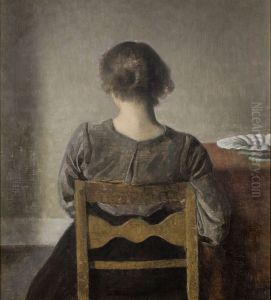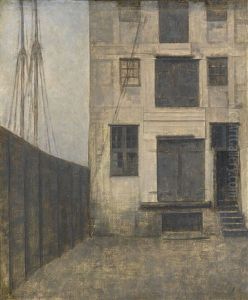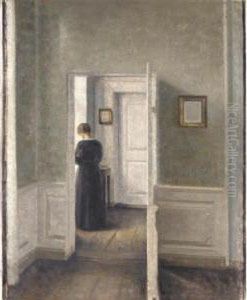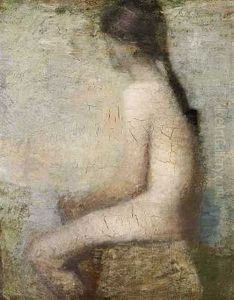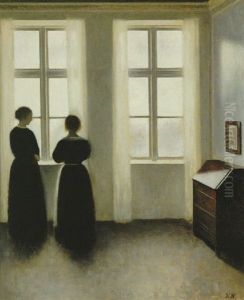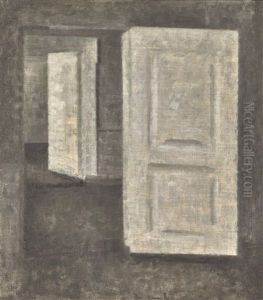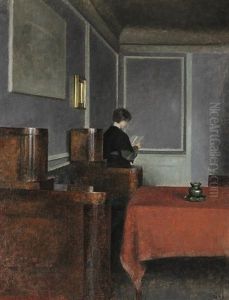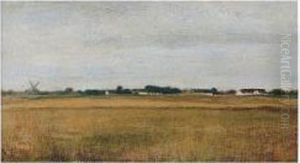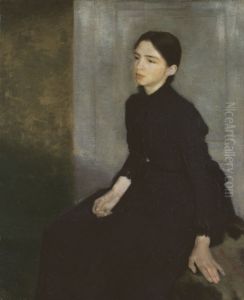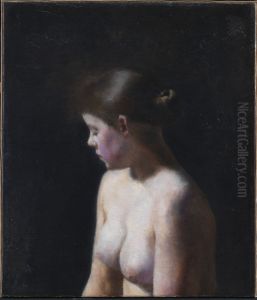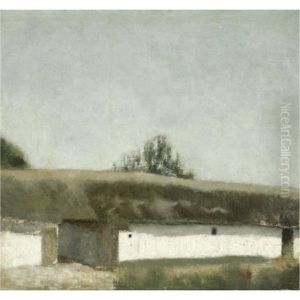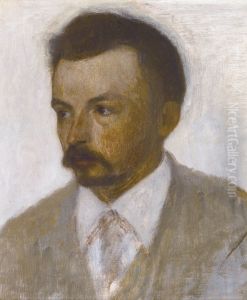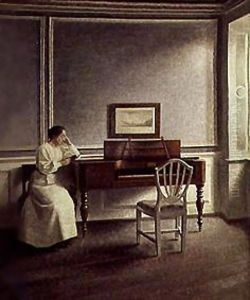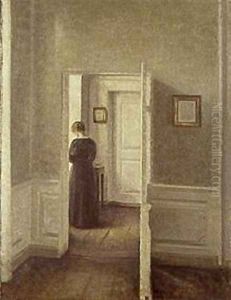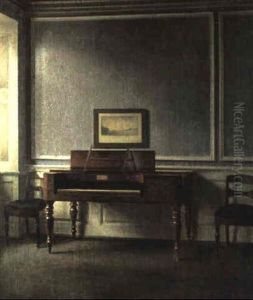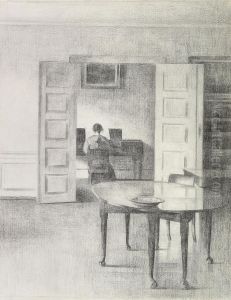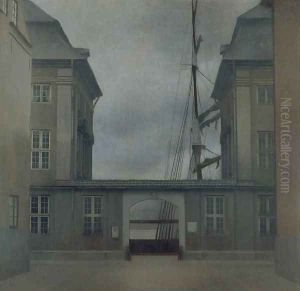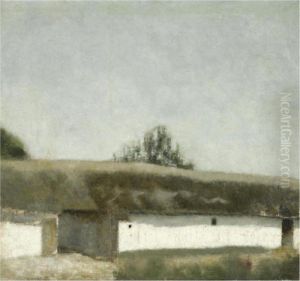Vilhelm Hammershoi Paintings
Vilhelm Hammershøi was a Danish painter known for his poetic, subdued portraits and interiors. Born on May 15, 1864, in Copenhagen, Denmark, Hammershøi established himself as a unique voice within the realm of fine arts. His early education in painting began with the Royal Danish Academy of Fine Arts where he studied from 1879 to 1884. His early work, influenced by the aesthetic and narrative style of the Dutch Masters and the Danish Golden Age, often depicted historical or literary themes. However, it was the profound simplicity and quiet atmosphere of his later works that garnered him the most acclaim.
Hammershøi's work is characterized by a limited color palette, consisting primarily of muted greys, browns, and blues. His compositions often featured the interiors of his Copenhagen apartment at Strandgade 30, with sparsely furnished rooms and solitary figures usually seen from behind or in profile, contributing to a sense of enigmatic detachment. The play of light and shadow in these spaces, along with the exquisite handling of paint, created an air of contemplative stillness that transcends their simple subject matter.
Despite his introverted and enigmatic nature, Hammershøi was connected with the artistic community of his time, including The Free Exhibition (Den Frie Udstilling), a progressive group of Danish artists who opposed the conservatism of the Academy. He exhibited with them and also internationally, gaining recognition in exhibitions such as the Exposition Universelle in Paris in 1889 and the Berlin Secession in 1891.
Hammershøi's marriage to fellow artist Ida Ilsted in 1891 became a central element of his life and work; she often served as a model for his paintings. His works rarely include any narrative or action, further emphasizing their silence and introspection. By the turn of the century, Hammershøi had developed a significant following, particularly in Scandinavia and Germany, and his work began to influence other artists.
Despite this, Hammershøi never achieved widespread fame during his lifetime, and his art was often misunderstood by the critics of the time. However, his reputation has grown posthumously, and today he is regarded as one of the leading figures of Danish painting, celebrated for his distinctive style and the quietude of his oeuvre.
Hammershøi's health began to decline in the years leading up to World War I, and he passed away on February 13, 1916, in Copenhagen. His legacy continues to be appreciated by art lovers and collectors worldwide, with his paintings held in major museums and galleries, and his influence seen in the works of contemporary artists who value minimalism and introspection.
